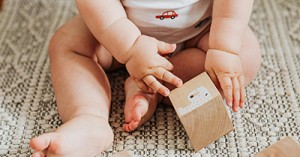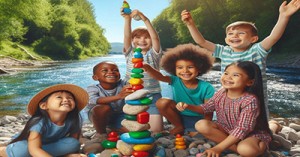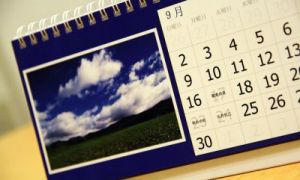A child-centred approach in an ECEC context involves giving children choices of learning activities, with the teacher acting as a facilitator of learning. It is a way of placing the child at the notional centre of the learning process in which they are active participants. The following article provides information on Child-Centred Curriculum, The Learning Environment, Educator's Role and more.
Child-centred Curriculum
In the curriculum, a child-centred approach means that it is designed to build on the unique needs, interests, dispositions and strengths of each child. Other characteristics of such a curriculum are that it:
- is planned and implemented with a focus on children learning through play
- reflects a range and variety of experiences to cater for children’s needs, interests, abilities
- takes account of the need for children to pursue their own interests and play experiences
- recognises the child’s voice, it captures the child’s ideas and intentions and recognises their learning strategies or learning goals
- is communicated appropriately to children, families and educators through written and verbal information
- is sufficiently flexible to permit changes initiated by children and educators working together
- reflects the interests and diversity of the children and the expertise of the educators
- reflects the connections between children, families and communities and the importance of reciprocal relationships and partnerships for learning
- values the cultural and social contexts of children and their families
Child-centred Learning Environment
In a child-centred approach, environments are organised in such a way as to empower and enable children to be in control of their own learning. Some ways you can do this are:
- Selecting experiences and planning the environment by involving children; can mean setting up the classroom which reflects their interests like equipping play corners with toy dinosaurs and aeroplanes, or letting them choose from a range of materials and equipment to initiate their own play which in art and crafts need not only be crayon and paint but also assorted paper, scissors, glue and tape, boxes, cloth scraps, foam, feather and objects to make prints.
- Seeing that learning environments offer the right balance of experiences that include art and crafts, physically active play, science, maths and technology, language and literacy experiences, construction and games, dramatic and imaginative play, music and movement, sensory play like water play and sand play as well as nature and environmental experiences
- By planning for open-ended experiences using unstructured material whose uses are not predetermined and which have the potential for activities such as squeezing and rolling such as balls of different sizes, pipes, tubes, scarves, beanbags and sponge blocks. Other examples might range from boxes, bottle lids, cardboard, Paper towel rolls and blocks to loose parts like beads, sticks, ribbons, stones and rings which offer infinite possibilities for play as children line them up, scatter, carry, knock about, take apart, put together and redesign these parts.
- By ensuring clear boundaries that let children learn new and interesting skills in safe and supportive ways; thus while children have fun playing with nuts, bark, sand and water, educators should ensure that such outdoor environments are safe and free of hazards like insects and drowning; also arrange the room to encourage children to self regulate their behaviour like by putting in place clear boundaries, traffic patterns and self-contained experiences.
- By creating play spaces that enable children to actively explore their interests, interact with others and develop real skills; educators need to organise defined spaces for creative activities, quiet reading and relaxation, construction, hiding, pretend play and noisy play.
- By offering access to natural materials like shells, mud, clay, pebbles, rocks, twigs, leaves, feathers, tree bark, gumnuts, logs in different sizes besides water and sand play. Also include fabrics of different kinds like old scarves, curtains and leftover scraps of material. Sensory stimulation derived from interacting with natural materials allows children to learn with and engage all of their senses including seeing, hearing, touching and smelling.
- By including recycled items in play materials like plastic containers and bottles, cooking utensils and pots and pans, yarn, home decorating materials such as tiles, carpet samples, fabric samples, door, handles, old curtain rods and rings and wall paper, building materials such as timber off-cuts, bricks and stones as well as old household items such as wrapping paper, wallpaper, ribbon, decorations. Such unstructured material can not only facilitate open-ended play but also communicate important lessons on sustainability and environmental awareness.
Educator’s Role In A Child-centred Approach
In a child-centred approach, an educator might be called upon to take on a variety of roles. These are primarily:
An observer - Observing children is crucial since it helps educators to gain knowledge of children’s interests, preferences and strengths which are key to planning child-centred experiences. Observing also helps educators to understand how the environment is working for children, including whether it supports their play and provide the potential for a wide range of experiences. Some useful observation methods are:
- noticing – for example, making mental notes
- photography – for example, taking pictures as and when things happen
- timelines – for example, identifying a child or area and checking in every 10 minutes
- frameworks – for example, checklists or looking for characteristics
- focussed – for example, looking at a specific area or child for a period of time
- written – for example, an account or detailed ‘story’
Facilitator - Educators can facilitate child-centred experiences and child-centred learning by:
- creating learning environments that encourage children to explore, solve problems, create and construct
- engaging in sustained shared conversations with children to extend their thinking
- recognising spontaneous teachable moments as they occur, and use them to build on children’s learning
Adopting a supportive role in child-centred experiences would involve:
- interacting with infants and children to build attachment utilising routine times and play experiences to do this
- Letting children choose their own experiences; provide a variety of interesting materials, equipment and props and then allow children to decide which ones to explore and use during play.
- letting children choose how long they will play; children need unhurried time to engage in play processes like planning, problem-solving and hypothesis-testing so avoid interrupting them before they have really finished a task, project or play experience. Similarly, don’t push them to continue with activities they have lost interest in.
- scaling up play material and experiences to raise challenge levels; for example, you could provide more complex tools like scissors or mix up material like dried leaves and pinecones with paint and glue.
- Focusing on the process, rather than the end product; so for instance, avoid telling children how their bridge should look like in their artwork or expecting children to create a similar-looking bridge; instead encourage children’s efforts and the creative process, like their choice of colours or details added to the bridge.
- Showing children it is okay to get messy when playing and encouraging parents to be aware of the value of messy play.
- Helping children to establish and maintain limits during play. Provide appropriate and consistent guidance. This will ensure that children play in a positive social environment that fosters cooperation and collaboration
Participant - Participating in the child’s activities when invited to and responding with interest, sensitivity and encouragement; some cues that can indicate the child’s invitation might be
- a child tapping on your shoulder and then running away laughing
- make a funny face or winking
- throwing a ball to you,
- moving closer to you with things to play with,
- make space in a group for you to join
- allocating roles by saying, “you can be the dragon”.
Role Model - Children observe the behaviour, words and actions of adults in their lives. So, even though educators are not expected to ‘lead’ in child-centred learning, trusted adults have a huge role in modelling:
- positive ways to relate to others for example by approaching for a play taking turns and good manners like saying ‘please’ and ‘thank-you’
- emotional regulation skills for example by practising coping strategies with children or sharing personal stories about emotions.
- Skills to support children’s activities – for example, rather than telling a child how to paint with leaves, show the child how to dip the leaf in paint and then let them take over.
Building Connections
The EYLF presents children’s sense of belonging in families and communities as one of the three fundamental components of the learning framework. Some ways educators can underpin a child-centred approach with family and community connections are:
- By inviting inputs from parents about their children’s interests, strengths and experiences at home and community
- By reflecting in a classroom environment and learning materials, local flora and fauna, dress and habitation practices of the community as well as diverse cultural, ethnic, and linguistic groups including Aboriginal and Torres Strait Islanders' ways of living.
- By inviting parents to be part of regular services events like Open Days and celebrations to processes like a review of service policies and Quality Improvement Plans
- By having families collaborate as volunteers for arts, music or STEM activities or school trips and excursions.
Child-centred Assessment
Monitoring and evaluating a child-centred approach ensures your efforts are effective. It helps you work out if and how the children benefiting, what’s working well and what needs to be improved. In the ECEC context, documentation forms the core of the learning cycle of observation, analysis, planning, implementation and reflection. This can be made more child-centred by:
- involving children in the documenting process; for example by asking a child which of their artworks they think should go on the wall display. This not only children makes children feel noticed and realise that their work is valued but brings about a deeper engagement with feeling ownership of the learning space which is important for their sense of being and belonging.
- Participatory methods of recording children’s voices can help educators to evaluate learning strategies and approaches. For example, children can be invited to vote on activities in their centre by placing a smiley face on pictures of things that they enjoy doing and a sad face on those that they don’t.
- asking a child to think of captions to add to their portfolio or the class floorbook gives the educator an opportunity to see what aspect of an experience was especially meaningful for the child and how it supported their learning and development.
- discussing consent when taking children’s photos for documentation. Even though, a school or service may have gotten consent from the parents to take and share children’s photos, a truly child-centred approach will engage with children’s consent too. You can start by having discussions with children about the different purposes of taking photos like to show their parents how they spent their day or to capture fun time while storytelling. Also, ask whether they would like their photo taken and then extend it to how they feel about their photos being shared with other parents and families.
When a service adopts a child-centred approach, it means that all components of the service are planned and developed to match the unique needs and skills of each kid. gives every youngster an equal chance to use and take part in the service's various features.
References:
- Child Centred Curriculum, ACECQA
- Loose Parts Play, Play Scotland
- Children's Voices, Hippy Australia
- Children's Agency, Hippy Australia







 As an Educator in Australia, your pay rate falls under the Children’s Services Award 2010. This award states the minimum amount that an employer can
As an Educator in Australia, your pay rate falls under the Children’s Services Award 2010. This award states the minimum amount that an employer can When working as a qualified Early Childhood Teacher (with a university degree) within a service, your rate of pay will come from the Educational Services
When working as a qualified Early Childhood Teacher (with a university degree) within a service, your rate of pay will come from the Educational Services When working as a Diploma Qualified Educator your pay rate is from the Children's Services Award 2010. This Award states your minimum rate of pay
When working as a Diploma Qualified Educator your pay rate is from the Children's Services Award 2010. This Award states your minimum rate of pay When working as a Cert 3 Qualified Educator, your pay rate is from the Children's Services Award 2010. This Award states your minimum rate of
When working as a Cert 3 Qualified Educator, your pay rate is from the Children's Services Award 2010. This Award states your minimum rate of Educational Leaders play a crucial role in their early childhood service by ensuring that the educational program aligns with best practices and supports the holistic
Educational Leaders play a crucial role in their early childhood service by ensuring that the educational program aligns with best practices and supports the holistic In early childhood education and care, ratios are more than a technicality—they are a frontline safeguard. Every child deserves responsive supervision, emotional connection, and developmental
In early childhood education and care, ratios are more than a technicality—they are a frontline safeguard. Every child deserves responsive supervision, emotional connection, and developmental Here’s a comprehensive Mobile Phone and Smart Watch Policy tailored for early childhood education and care (ECEC) services in Australia, aligned with the latest 2025
Here’s a comprehensive Mobile Phone and Smart Watch Policy tailored for early childhood education and care (ECEC) services in Australia, aligned with the latest 2025 With the new national child safety reforms kicking in on 1 September 2025, early childhood services like yours have a real opportunity to lead the
With the new national child safety reforms kicking in on 1 September 2025, early childhood services like yours have a real opportunity to lead the The Sea of Fish Challenge is a national initiative that invites children, educators, families, and communities to create and display fish artworks as a symbol
The Sea of Fish Challenge is a national initiative that invites children, educators, families, and communities to create and display fish artworks as a symbol Across the early childhood education and care sector, educators are sounding the alarm: current staffing ratios are insufficient to deliver safe, meaningful, and developmentally appropriate
Across the early childhood education and care sector, educators are sounding the alarm: current staffing ratios are insufficient to deliver safe, meaningful, and developmentally appropriate


